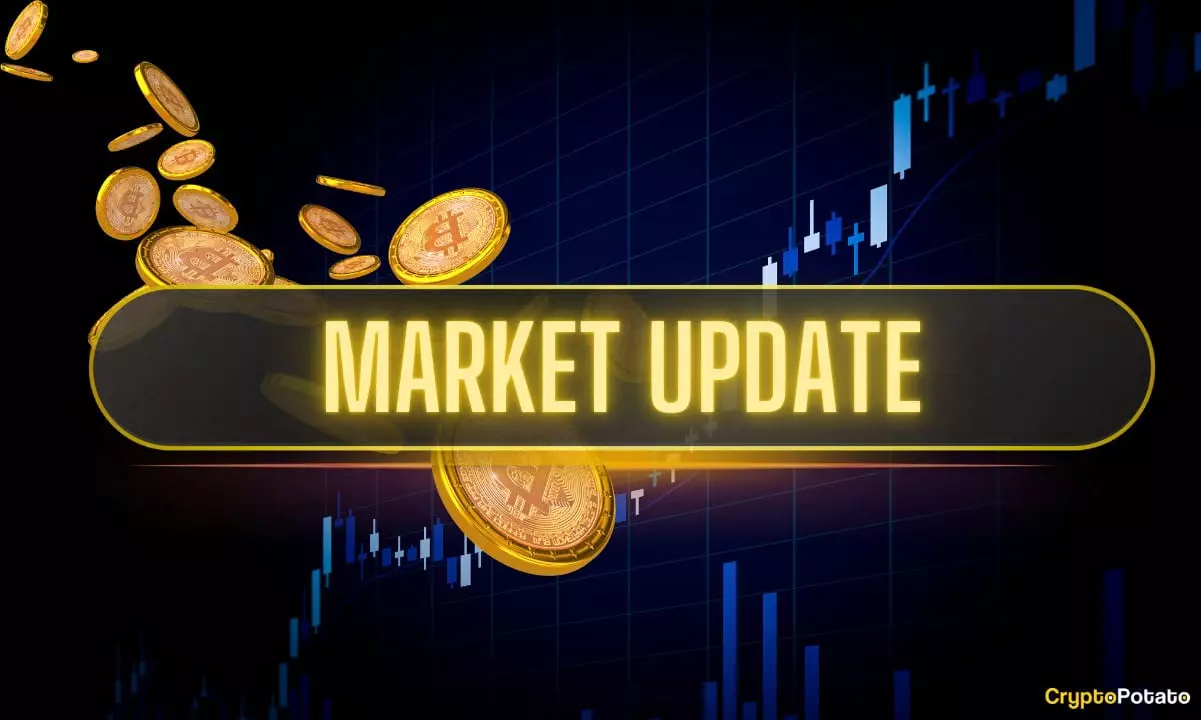Bitcoin’s recent breakthrough, shattering its January all-time high of approximately $109,100, has reignited discussions across the financial spectrum about the cryptocurrency’s viability. Unlike past surges that have often met with brutal corrections, this recent rally indicates a robust underlying sentiment. Investors who endured four arduous months of price oscillations are now reaping the benefits. The currency faced near-constant resistance at $107,000, repeatedly testing its boundaries before eventually breaking free. It is this resilience—that blend of anticipation and optimism—that paints Bitcoin as not merely a speculative asset but as a valid contender in the realm of finance.
Observers noted that the price fluctuations have been drastic yet brief. After battling against the resistance, Bitcoin ascended to around $110,000 and even flirted with $112,000, coinciding with what enthusiasts are now calling Bitcoin Pizza Day. This cultural moment celebrates the first transaction made using Bitcoin, emphasizing the currency’s evolving narrative from a niche digital curiosity to a mainstream financial player.
What’s particularly noteworthy is how Bitcoin held its ground around $111,000, despite an immediate price dip from relentless U.S. political tensions, especially with the reinstated tariff warnings from President Trump. Such stability reflects Bitcoin’s increasing adoption and the sheer weight of market positivity riding on the currency’s back.
Regulatory Challenges and Market Responses
The recent announcement from President Trump regarding tariffs of up to 50% on EU countries sent immediate shockwaves through the market, leading to a rapid decline of roughly $3,500. However, Bitcoin’s swift recovery to hover near $109,000 illustrates a critical factor in modern cryptocurrency markets: resilience in the face of external pressures. This reaction reveals more than just a binary fluctuation; it indicates an asset that many are beginning to see as a ‘safe haven’ amid geopolitical instability.
The nature of Bitcoin as a decentralized asset does raise questions about its susceptibility to regulatory news, yet this incident reinforces the notion that investor confidence is becoming more entrenched. As traditional markets exhibit volatility in uncertain political climates, cryptocurrencies like Bitcoin continue to offer a unique hedge, strengthening their appeal among both seasoned and new investors alike.
Emerging Competitors: The Altcoin Landscape
While Bitcoin remains dominant, it is worth noting the rapid ascent of altcoins such as HYPE, which has recorded a staggering 30% gain in the past week. With a market capitalization of $3.551 trillion and Bitcoin dominance now around 60.9%, the altcoins have their moments in the sun. This development is critical for the ecosystem because it bolsters innovation and diversification within the market.
However, Bitcoin remains the gold standard, often overshadowing the volatility seen with altcoins. Despite recent profit-taking behaviors across the altcoin spectrum, Bitcoin’s health, as indicated by various on-chain metrics, suggests that it could sustain its upward trajectory. Such findings imply that serious investors are beginning to hedge their bets, creating a multi-dimensional investment landscape where Bitcoin is the anchor amidst a flotilla of speculative ventures.
Institutional Influence and Market Infrastructure
The discussions among major U.S. banks—JPMorgan Chase, Citigroup, Bank of America, and others—regarding the potential creation of a joint stablecoin point toward a significant institutional embrace of cryptocurrency technologies. By providing infrastructure for smoother cross-border transactions, banks are acknowledging the permanence of digital currencies in today’s economy.
For Bitcoin and the cryptocurrency horizon, such developments could serve as the cornerstone for mainstream adoption. Any hesitation from institutional players is slowly fading, countered by dependency on the efficiency offered by blockchain technologies. As these institutions gear up to integrate blockchain into their operations, Bitcoin could find itself even more firmly entrenched as a foundational asset in the digital finance space.
Bitcoin ETFs: A Philanthropical Quandary
With BlackRock’s Spot Bitcoin ETF now a dominant force, questions arise around centralization and the ramifications for Bitcoin’s decentralized ethos. The asset’s increased adoption as an institutional investment keeps it at the forefront of financial debates. However, if a single entity manages a majority of Bitcoin ETF securities, does this threaten the decentralized nature of the asset? It’s a quandary that warrants attention, as the stakes are high not only for investors but also for the ideological underpinnings of what Bitcoin represents.
The intersection of Bitcoin’s dynamics with evolving investor sentiment, institutional frameworks, and regulatory landscapes is not merely a narrative—it is an evolving symphony of chaos and order. Thanks to a combination of unwavering bullish sentiment, hastened institutional adoption, and Bitcoin’s consistent resilience, the cryptocurrency market seems poised for unprecedented heights, yet the inherent challenges cannot be overlooked.


Leave a Reply